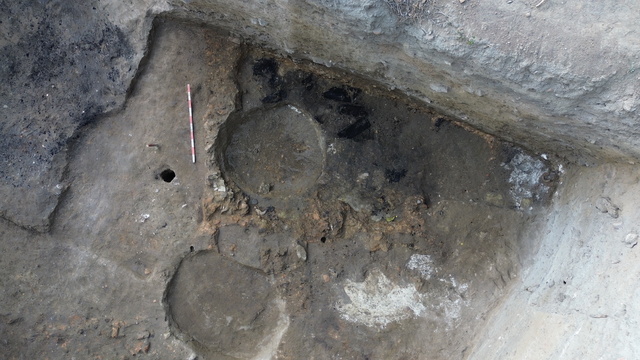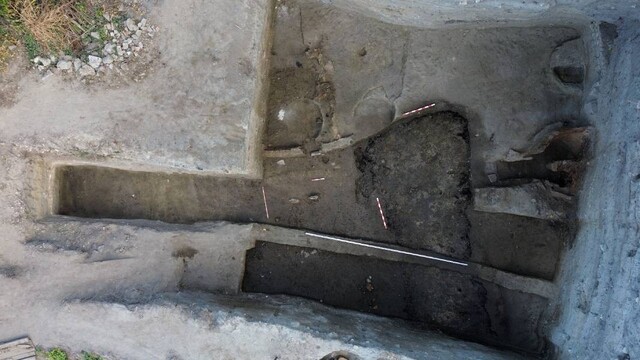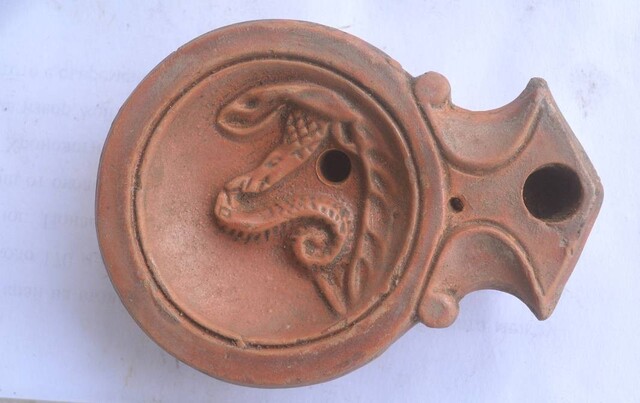In the heart of Bulgaria, along the banks of the Danube, a series of fascinating archaeological discoveries are unveiling the secrets of life on the Roman frontier. Excavations in the town of Lom have uncovered the remnants of an ancient Roman military site, offering a rare glimpse into the defense strategies, daily life, and cultural exchange of the first century AD. As researchers continue to dig deeper into the past, each new discovery adds to the rich tapestry of this ancient settlement, revealing the powerful forces that shaped the Roman Empire’s borders.
The Discovery of the Roman Military Site
The discovery, led by Dr. Vladislav Zhivkov of the National Archaeological Institute, is a significant milestone in the study of the Roman Empire’s frontier. Excavations in the Kaleto district have uncovered a section of a Roman military camp, marked by a fortress wall and three surrounding ditches, stretching to a depth of 7.5 meters. These features suggest that the site was originally part of a defensive outpost along the Lower Danube, one of the Empire’s key military zones.


The site’s strategic location on the Danube River, a critical waterway for trade and military movements, further emphasizes its importance. The remnants found in Lom offer an extraordinary opportunity to study how the Romans organized their frontier defenses and interacted with neighboring peoples, including the Dacians.
Video
Watch the video to see the fascinating discovery of an ancient fridge unearthed at a Roman military camp in Bulgaria. It’s an unexpected glimpse into Roman life!
Roman Military Defense at the Danube Frontier
During the first century AD, the Danube frontier was a vital defensive line for the Roman Empire. The discovery of the fortress walls and ditches highlights the region’s strategic significance. The walls, constructed with large stone blocks, provided both defense and control over the movement of people and goods. The surrounding ditches were likely part of a multi-layered defense system designed to slow down or repel attacks.
The military camp in Lom was part of the Roman Empire’s extensive network of fortifications designed to protect against incursions from tribes beyond the Empire’s borders. At the time, Dacia (modern-day Romania) was one of the main threats, and this military site would have played a critical role in defending the Empire’s interests.
The meticulous planning and engineering behind the fortifications reflect the Roman military’s sophisticated approach to frontier defense. The fact that these structures were built without modern tools is a testament to the Roman military’s engineering expertise and the Empire’s vast organizational strength.
The 1st-Century Roman Camp: Daily Life and Structures
The military camp unearthed at Lom was not just a place for soldiers to rest; it was a complex, functional site designed for military purposes. Archaeologists uncovered a barracks-like building, which may have served as a shelter for the soldiers or as a stable for horses. This structure’s discovery helps us understand the day-to-day life of Roman soldiers stationed on the frontier. The barracks would have been a vital space for both living and training, allowing soldiers to prepare for the constant threats they faced on the frontier.

The excavations also uncovered a wide array of artifacts, such as imported ceramic vessels, bronze objects, and Roman coins. Many of these items, which came from as far as Southern Gaul, were likely used by the soldiers during their time at the camp. The imported pottery offers evidence of the Empire’s vast trade networks and the cultural exchange that occurred between different regions of the Roman world. These findings suggest that the soldiers stationed in Lom were not isolated but part of a larger, interconnected world.
The Burning of the Roman Camp: A Tragic Attack

The most dramatic chapter in the history of the Lom military camp came in the 80s AD, when the camp was burned down during an attack. The destruction likely occurred during a period of unrest along the Roman frontier, with various tribes challenging Roman control. The exact nature of the attack remains unclear, but the fire that ravaged the camp provides a vivid reminder of the constant challenges faced by the Roman military on the frontier.
The timing of the attack coincided with a period of heightened tension between the Roman Empire and the neighboring Dacians. The destruction of the camp underscores the vulnerability of frontier outposts and the importance of constant vigilance. The remains of the burnt structures also offer insight into the nature of Roman military fortifications and the devastating effects of warfare during the Empire’s expansionist era.
Continuity and Change: From Roman Camp to Port
After the Roman conquest of Dacia in the early 2nd century, the importance of the Lom site shifted. No longer located on the Empire’s frontier, the military camp gave way to a new role as a port on the Danube River. This transition reflects the changing nature of Roman military needs and the growth of trade in the region. The Danube, which had once been a barrier between the Roman Empire and the tribes of Dacia, became a key commercial route, connecting the Empire to the wider world.
As the port grew in importance, it likely became a center for the exchange of goods, ideas, and culture. The port’s strategic location allowed it to flourish, and it became an important hub for both military and civilian activity. The remnants of the Roman camp, once a center of military power, eventually evolved into a thriving commercial center.
Pre-Roman Settlements: Traces of the Bronze Age

While the Roman period is the focus of the excavations, the site in Lom also contains evidence of earlier settlements. Among the most surprising finds was the discovery of a clay floor dating back to the 11th century BC, along with broken pieces of ceramic vessels linked to the Baley-Orsoia culture. These findings suggest that the area was inhabited long before the Romans arrived, providing a rich historical context for understanding the region’s development.
The discovery of these earlier settlements highlights the continuity of human presence in the region, with inhabitants living and thriving in the area long before the rise of the Roman Empire. The evidence of pre-Roman settlements offers a broader understanding of the region’s historical significance and adds a new layer to the story of Lom.
The Findings: A Glimpse into Ancient Life
The 400 artifacts uncovered during the excavation, including horse ammunition, ornaments, and crosses, offer valuable insights into daily life at the Lom military camp. Each artifact tells a story of the people who lived and worked at the site, shedding light on their customs, beliefs, and activities. These objects will be carefully preserved and displayed at the Historical Museum in Lom, where they will provide future generations with a window into the ancient past.
The discovery of these artifacts further enhances our understanding of life in the Roman Empire, particularly along the frontier. The range of objects found at the site attests to the diversity of experiences in the Roman military and the complexity of life at the Empire’s edge.
Conclusion: Uncovering the Layers of History
The excavations at Lom have opened a new chapter in our understanding of the Roman Empire’s presence along the Danube frontier. The remains of the military camp, the artifacts found within it, and the evidence of earlier settlements all contribute to a richer understanding of the region’s historical development.
As more discoveries are made, researchers continue to piece together the puzzle of life in ancient Lom, shedding light on the military, economic, and cultural forces that shaped the area over centuries. The ongoing excavations serve as a reminder of the complex and dynamic history of the Balkans, offering a window into the past that helps us understand the ancient world in new and exciting ways.
Video
Check out the video to explore the best-preserved Roman colony in the world. This ancient site offers an extraordinary look into Roman civilization!



